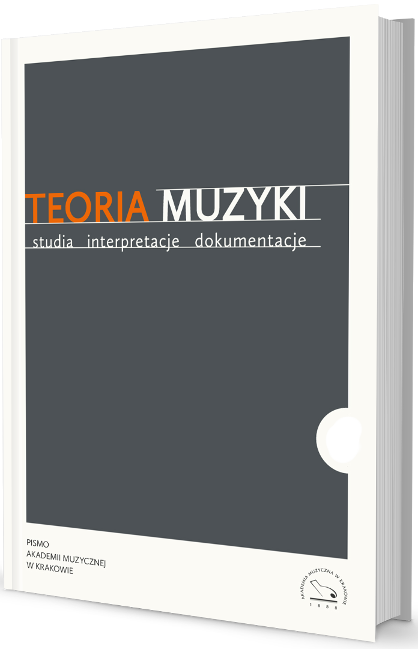„Dynamiczne systemy” i dążenie do „stanu stabilności”. W kręgu kompozytorskich myśli
“Dynamic Systems” and the Pursuit of the “State of Stability”. In the Circle of Composer’s Thoughts
Author(s): Beattina SkrzypczakSubject(s): Music
Published by: Akademia Muzyczna w Krakowie im. Krzysztofa Pendereckiego
Keywords: tonality; tonos; dynamic systems; states; processuality; chaos
Summary/Abstract: The starting point for this article involves reflection on the phenomenon of tonality as such, extending its meaning to include its aspects beyond the historical approach. This is possible by invoking the ancient Greek notion of “tonos” which, as understood by the Pre-Socratics, meant the force (principle) bonding all layers of being together. In order to relate this thought to music, I present the concept of tonality as the bonding force within the cosmos of occurrences of musical nature. In general, I tend to associate the phenomenon of “tonality” with the cognitive approach rather than merely a way of organizing the sound material. In the subsequent part of the article I reflect upon my own works, placing particular emphasis on the phenomenon of processuality in the context of dynamic systems and their states. I derive the very concept of dynamic system from Katarzyna Zahorodna’s definition, included in her publication The Problem of Mental Representation in Extended Cognitive Systems. In my considerations, I distance myself from issues connected with tonality. The only remaining point of reference is the concept of “tonos”, referring to the force, or rather forces, of binding individual sections of the form and, finally, of the whole composition. These forces are perceptible in the context of certain states of musical matter standing in opposition to each other. These states include the following ones: statics – process, clarity – obscurity, as well as various degrees of density of musical matter. It is within these states that a particular kind of gravitational field is created wherein processual phenomena occur. They occur on the linear, as well as the vertical layers, in the context of micro – aswell as macro-forms. Due to the creation of higher-order structures in orchestral works, processes of this type become more complex. In addition, they are influenced by my reflections on chaos as a complex system (SN 1993 J and Initial).The part of the article with my concluding arguments on the issue of dynamic systems includes my explanation of how they affect the shaping of time flow and the dramatic nature of the pieces. In this context, time becomes something of a metaphor and a trace of vital processes. However, the energy resulting from the activity of the sound substance forms a stimulus that initiates and supports perseverance. The article closes with a reflection on the issue of harmony as the state of internal balance. Hereby, I refer to Ancient Greek mythology, according to which harmony is the result of a dynamic, internally contrasting situation.
Journal: Teoria Muzyki. Studia, Interpretacje, Dokumentacje
- Issue Year: VII/2018
- Issue No: 12
- Page Range: 163-187
- Page Count: 25
- Language: Polish

